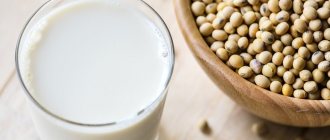General information
The term “human nutritional standards,” which is very often used in medical literature, is in fact not entirely accurate. Many nutritionists argue that it is more correct to use the concept of “physiological needs of the body,” because the most important thing is the body’s need for the most important nutrients. Currently, there are many recommendations regarding food consumption standards. Below we will discuss the most important of them, which will help you correctly determine nutritional standards and develop the healthiest diet possible.
Diet of 200 grams: sample menu for the day
It is enough not to overeat, and also limit your diet to just 5 spoons of the dish in order to lose extra pounds. The peculiarity of such nutrition is that it allows you to normalize the process itself, take it as a basis and use it in the future. You can create your diet at your own discretion. An approximate menu for a day of a 200 gram diet could be like this:
- Breakfast – 50 grams of berries with 150 grams of low-fat cottage cheese or oatmeal. Berries can be added to porridge or eaten separately. You can sweeten the porridge a little. Do not immediately drink water or unsweetened tea with breakfast. You can wait 30–60 minutes, and then drink your favorite drink. You should eat your first portion of food within an hour of waking up.
- 2 hours before lunch – 150 grams of low-fat cottage cheese. It can be replaced with a glass of kefir or fermented baked milk.
- Lunch – vegetables stewed with meat – 200 g. Use any of your choice, it is better to use a variety of products for cooking. Nutritionists advise setting lunch, that is, consuming the main portion of food before 13:00.
- Afternoon snack – fresh fruits or vegetables – 200 grams.
- Dinner – boiled fish 100 g, buckwheat – 80 g, vegetables – 20 g. Set the time for dinner 3 hours before bedtime.
Sugar is prohibited, and therefore drinks consumed must be without glucose.
How are nutrition standards determined?
Back in 1930, nutrition standards for humans were determined in Russia. Later, already in 1991, these standards were established taking into account the coefficient of physical activity (this is the ratio of daily energy expenditure to the value of the main volume). Also an important point in the calculation is the calorie ratio between carbohydrates, proteins and fats - it should accordingly be 50:15:35. When physiological norms are calculated, other important points are taken into account - age, gender, physical activity, the presence of chronic diseases, etc.
The daily calorie intake for women is 2100, while the men's diet should contain 2700 calories. If a person works physically, these indicators increase. Accordingly, for those losing weight, the calorie content of the daily diet should be reduced. For children, these indicators are already associated with the intensity of their growth and activity.
Nutrition standards have also changed historically, as changes occurred in human living conditions. When he had to fight for survival, hunt a lot and get food, the calorie intake was much higher in order to survive and replenish energy costs. However, in the modern world, people tend to consume much more than they spend. Now there is every opportunity to eat both varied and tasty, but at the same time both the quality of food and the balance of the diet as a whole are deteriorating. This leads to illness, obesity, and a general deterioration in the quality of life.
Thus, nutritional standards for a person differ depending on the following factors:
- floor;
- characteristics of work;
- age;
- climate;
- physiological state of the body - pregnancy , lactation, diseases, etc.
It is important to consider that the body may require different amounts of calories on different days. After all, metabolism can slow down and speed up at different times.
In addition, it depends on physical activity, work performed, and other external factors. So you don't have to count calories too carefully. It is important to simply adhere to the recommendations for proper nutrition, and not significantly violate the standards determined by nutritionists.
How many calories should you consume per day?
The answer to this question depends on the goal being pursued. If you want to lose weight, you need to eat no more than 1800-200 calories per day. This can be achieved with three meals a day, if one serving contains from 600 to 700 kcal. It should contain 70-80 grams of proper (complex) carbohydrates, 30 grams of protein and from 20 to 25 grams of fat.
To gain muscle mass, a man needs at least 2700-2900 kcal per day. This amount of calories can be achieved by eating five or six times a day, with most consumed at breakfast and lunch. The rest of the carbohydrates should be left for the meal after strength training.
What does balance depend on?
The energy that enters the body depends on the amount of food consumed and their composition. Energy supply depends on the following factors:
- calorie content of food;
- composition of products;
- vitamins;
- micro- and macroelements;
- liquid.
In turn, energy is spent on supporting vital functions - heat exchange, blood circulation, cell growth and renewal, and the process of food digestion. It is also spent on movement and physical activity.
3rd myth. The more often we eat, the faster muscles grow
Many people eat multiple meals a day in an attempt to build more muscle mass. Based on studies examining the rate of muscle protein synthesis (the rate at which protein is produced in muscle, which is equivalent to the rate of muscle growth) after eating, some scientists have concluded that 3-5 meals per day with an even distribution of protein is optimal for maximizing gains. the rate of muscle protein synthesis and, therefore, the rate of muscle growth.
However, these studies were short-term, that is, subjects were given a protein-rich meal, then protein synthesis rates were assessed for several hours and conclusions were drawn. (Okay, it's not that simple, but you get the idea.) Really, we need to look at longer-term data to understand whether meal frequency affects muscle growth over the long term.
Having studied scientific works that lasted from two to eight weeks, we will see the following picture. For both overweight people and those with a normal BMI, the number of meals per day had no significant effect on lean mass. Even if the subjects dieted and ate six meals a day, they did not experience any benefit in terms of maintaining muscle mass compared to those who ate three meals a day.
Based on these studies, there is no evidence to suggest that meal frequency affects muscle mass. However, it should be noted that the studies mentioned above were not conducted on athletes who regularly lift weights.
To date, only one study has examined the relationship between meal frequency and muscle mass in physically active individuals. Scientists from Nagoya University (Japan) selected male boxers and gave them 1,200 calories a day in preparation for a fight. Half of the participants ate six times a day, the other half twice a day. Over two weeks, those who ate six times a day retained more muscle.
It should be noted that the calorie intake was only 1200 calories per day, and the protein intake was only 60 grams per day (approximately 1 gram per 1 kilogram of weight). These numbers are significantly lower than what most men adhere to when dieting to preserve muscle mass.
Therefore, these results should be interpreted with caution and further research into meal frequency in athletes is needed.
Is it true
Most likely, meal frequency does not have a significant effect on muscle mass if the composition of the diet remains unchanged. However, additional research is needed on representatives of strength sports. Focus on consuming adequate calories and protein (about 30 grams of protein per meal) if you want to improve your strength in training and maximize muscle growth.
The body's need for food products
For the body to function normally, it must receive sufficient, and most importantly, a balanced amount of proteins, fats and carbohydrates. It is very important that food is environmentally friendly, although this is currently quite difficult to ensure.
Squirrels
They are the basis of human nutrition and life. You need to get proteins per day at the rate of 1 g per 1 kg of weight. These are minimum indicators, because a growing teenager should receive at least 5 g of protein per kilogram of body weight. A person gets proteins from meat, fish, dairy products, and legumes. After a full meal, up to 30 g of protein is absorbed within three hours.
In fact, proteins are a component necessary for the “construction” of the body and the production of all vital substances - enzymes , hormones , etc. It is with proteins that a person receives the so-called essential amino acids , which are not synthesized in the body. However, it is important to understand that excess protein can cause intoxication in the body.
Carbohydrates
The minimum requirement of carbohydrates per day is 300 g. The body receives carbohydrates by consuming fruits, vegetables, starches, and grains. Carbohydrates are the main “fuel” for the body, so their quantity largely determines a person’s condition. But if a lack of carbohydrates leads to disruption of metabolic processes, then their excess leads to the formation of excess fat. Excess weight gain occurs if more than 500 g of carbohydrates enter the body in one meal, as this leads to a sharp increase in glucose in the body, which leads to an increase in insulin and stimulation of the synthesis of fats, which are deposited in fat depots.
Fats
The absorption of fats in the body occurs during the consumption of protein foods. Fats are an essential element of a balanced diet. They are a source of energy and essential fatty acids. They are also important for the absorption of vitamins. The most important for the body are vegetable fats, consisting of unsaturated fatty acids. They do not contain cholesterol and are easily digestible. Animal fats are digested more slowly and contain a lot of cholesterol.
It is recommended to consume vegetable and animal fats in a 2:1 ratio. However, many modern nutritionists argue that the amount of animal fats can generally be reduced to a minimum.
Vitamins and minerals
In addition, dietary fiber, vitamins and minerals contained in food are important for the body. Basically, the body receives them from plant foods - greens, vegetables, fruits. Some of them contain a lot of fiber .
How many times a day should you eat to lose weight?
Experiments show that for weight loss there is no particular advantage to eating six meals a day compared to three meals a day. The subjects followed the prescribed diet for two months. The results were the same in both groups - all participants in the experiment lost weight.
A calorie deficit is important for losing weight. Eating once a day or nine times a day doesn’t matter.
When following a strict diet, there is rather a psychological aspect. Some people find it easier to tolerate restrictions when eating frequently, while others find it easier to regularly skip one or two meals.
This is interesting! It has been proven that partial fasting for 16/8 hours has a positive effect on brain function, reduces the content of harmful substances in the blood, and promotes weight loss.
They eat in this mode from 12 noon to 20 pm.
How to plan your diet correctly?
When shaping their diet, most people are guided by their own food preferences and needs. However, there are more specific guidelines by which a person’s daily nutritional intake can be formed. So, for a person per day or per week, in order to organize a balanced diet, the following products should be included in the menu (we are talking about a person of middle age and weight):
- Meat – 170 g daily. This amount includes both poultry and red meat. In this case, high-quality poultry meat should account for approximately half of this amount. It is quite acceptable for meat to not be on the menu every day. For example, you can eat it 4 days a week, 250 g.
- Fish - 300 g every week . Fish dishes can be eaten twice a week to ensure that the body receives enough nutrients. It is recommended to choose fatty fish, as they are high in omega-3 fatty acids , which are beneficial for health. The same standard includes any seafood.
- Vegetables – up to 400 g daily. This is the minimum you should consume daily. Almost every lesson on proper nutrition includes recommendations that the more vegetables included in the diet, the better it will be for your health. Every day you should prepare salads, eat boiled and stewed vegetables. However, it is important to understand that this norm should not be “overshadowed” by completely starchy vegetables - potatoes, beans, peas, beans.
- Fruits – up to 300 g per day. This amount is also only a minimum; it is advisable to eat even more fruit. We are talking, first of all, about fresh fruits, and not prepared in the form of jam or compotes. After all, fresh fruits have beneficial properties that are important for the body. However, recently prepared fruits, for example, baked in the oven, also retain a certain set of beneficial properties.
- Bread – up to 250 g per day. Since most people perceive bread as an independent product, it is often separated into a separate group. This norm should include all types of bread. It is especially important that a person regularly consumes whole grain bread. It is optimal for the main part of the diet to be bread with bran, while the amount of baked goods should be kept to a minimum.
- Cereals – 6 servings per day. Six servings is a plate of porridge or about 300 g of baked goods. We are talking about all cereals, pasta, and baked goods. In this case, the recommendations are similar to those regarding bread: it is important that this norm consists mainly of porridges made from unprocessed grains. It is advisable to consume different types of grains to get maximum benefits.
- Fats - at the rate of 1 g per 1 kg of weight per day. If a person weighs 70 kg, he should consume 70 g of fat per day. But in this case we are talking about fat consumed in general. That is, the one that is contained in different dishes and products also needs to be counted. The diet should contain both animal and vegetable fat, and it is better to consume more of the latter, but not less than 50% of the total amount of fat.
- Sugar – no more than 6 tsp. for women and no more than 9 tsp. for men. This does not mean that you need to put exactly this amount of sugar in tea or coffee. We are talking about sugar in general - that is, the sugar contained in foods and dishes must also be taken into account. It is important to remember that there is a lot of so-called hidden sugar in different dishes - it is found in baked goods, yoghurts, cereals, juices, etc. Those who cannot even approximately calculate the amount of sugar consumed should eat no more than 2 tablespoons of pure sugar per day. The rest of the person will receive from the dishes he eats throughout the day.
- Salt - up to 5 g per day. The amount of salt per day for a person is only one teaspoon. Moreover, the salt that is sprinkled on salads and the hidden salt is taken into account, that is, the salt that is in herring, sausage, snacks, etc. Salt should not be abused under any circumstances.
- Coffee – no more than 300 mg of caffeine per day. On average, this is the amount of caffeine contained in approximately 350 ml of ready-made natural coffee, provided that its strength is moderate. If the coffee is instant, then this is about 500 ml of drink. However, these are average recommendations. For some people this may be excessive. It is important to note that a certain amount of caffeine is also found in tea, especially green tea.
- Alcohol – 30 g of ethanol for men, 20 g for women per day. Of course, we are not talking about a recommendation, but only about an acceptable norm that will not cause harm to the body. The amount of alcohol depends on its strength. If we talk about dry wine, a woman can drink 200 ml of this drink, a man - 300 ml.
Introducing all of the listed products into the diet and observing calorie standards will make it possible to make the menu balanced and get all the substances necessary for the body in full.
The effect of frequency of meals on health
Short-term (lasting two to three months) studies were conducted in this direction. Their results suggest the benefits of frequent meals for people with health problems.
Carbohydrate metabolism
Frequent snacking reduces insulin levels and blood sugar.
More pronounced results were obtained in subjects whose diet was dominated by complex carbohydrates.
Cholesterol
A single meal leads to an increase in serum lipids (phospholipids, esterified fatty acids and cholesterol). When dividing the daily portion of food by 8–10 times, a decrease was noted.
In general, the level of “bad” cholesterol is 5% lower in people who eat 5 to 6 times a day.
Hypertension
According to the therapeutic diet (No. 10), for hypertension it is recommended to eat up to 4 – 5 times a day in small portions. Fractional nutrition allows you to reduce the load on the cardiovascular system and digestive tract.
This is interesting! It has been experimentally proven that with a single meal, compared to three meals a day, subjects' blood pressure increases.
Table. Three meals a day menu for weight loss
| Three meals a day day | Breakfast (8–10 a.m.) | Lunch (12–14 h) | Dinner (18-19 hours) |
| Mon | Sandwich with a small piece of butter and tea (unsweetened and without milk) Boiled fish Salad based on greens and tomatoes. Do not add dressing. | Mashed potatoes Vegetable-based broth with a bite of tomato, 1 boiled egg Boiled piece of meat Berry compote | Whole grain bread with tomato Tea with lemon. |
| W | Cottage cheese casserole (made from 4% fat cottage cheese) Tea with lemon and cheese sandwich | Borscht based on lean meat Boiled or stewed chicken with vegetables You can drink it with compote or use green tea | Salad made from tomatoes and cucumbers Kefir – 1 tbsp. (1.5% fat). Consume kefir after 30 minutes. after eating. |
| Wed | Omelet with tomatoes and sweet peppers Coffee without milk and sugar | Soup based on river fish or lean sea fish Risotto or rice with vegetables Apple compote, but not too sweet | Sandwich based on rye bread with the addition of low-fat cheese Salad from tomatoes and cucumbers, but without dressing, you can add sesame seeds and flax Tea without sugar |
| Thu | Boiled chicken egg Bread sandwich with cheese Green tea or coffee without sugar | Soup with the addition of your favorite, but not starchy vegetables and ingredients (potatoes, eggplants, corn) Boiled or steamed oatmeal with steamed veal, beef, turkey cutlets | Grilled or baked fish in foil Salad with herbs and tomatoes Green or herbal tea |
| Fri | Porridge with milk or steamed buckwheat, oatmeal – your choice Boiled egg or mussels Green tea or coffee without milk and sugar | Borscht with low-fat broth Mashed potatoes with the addition of boiled beef, lean chicken or rabbit Dried fruits compote | Vegetable salad, but without dressing Bread with a piece of cheese Tea without sweets |
| Sat | Steamed omelette with your favorite vegetables Boiled egg Coffee without milk | Vegetable soup Stuffed cabbage rolls with the addition of lean meats, can be prepared from mushrooms or vegetables Compote of your favorite berries and fruits | Salad based on a boiled chicken egg, green peas, cucumber, several pieces of boiled chicken |
| Sun | Salad based on cucumbers, herbs, tomatoes Boiled eggs coffee | Chicken broth with boiled egg Mashed potatoes with veal chop Apple compote | Salad based on Jerusalem artichoke and radish Stewed liver with onions Kefir or milk to taste, but a low-fat product |
The proposed table shows only possible dish options without specifying grams. They should be calculated separately, taking into account the established calorie intake per day. Special tables are used for calculations. It is recommended to first obtain recommendations from your doctor.
Eating three meals a day when losing weight is the basis for weight loss. It can be active and more effective if physical exercise is added to the proposed nutritional system.











